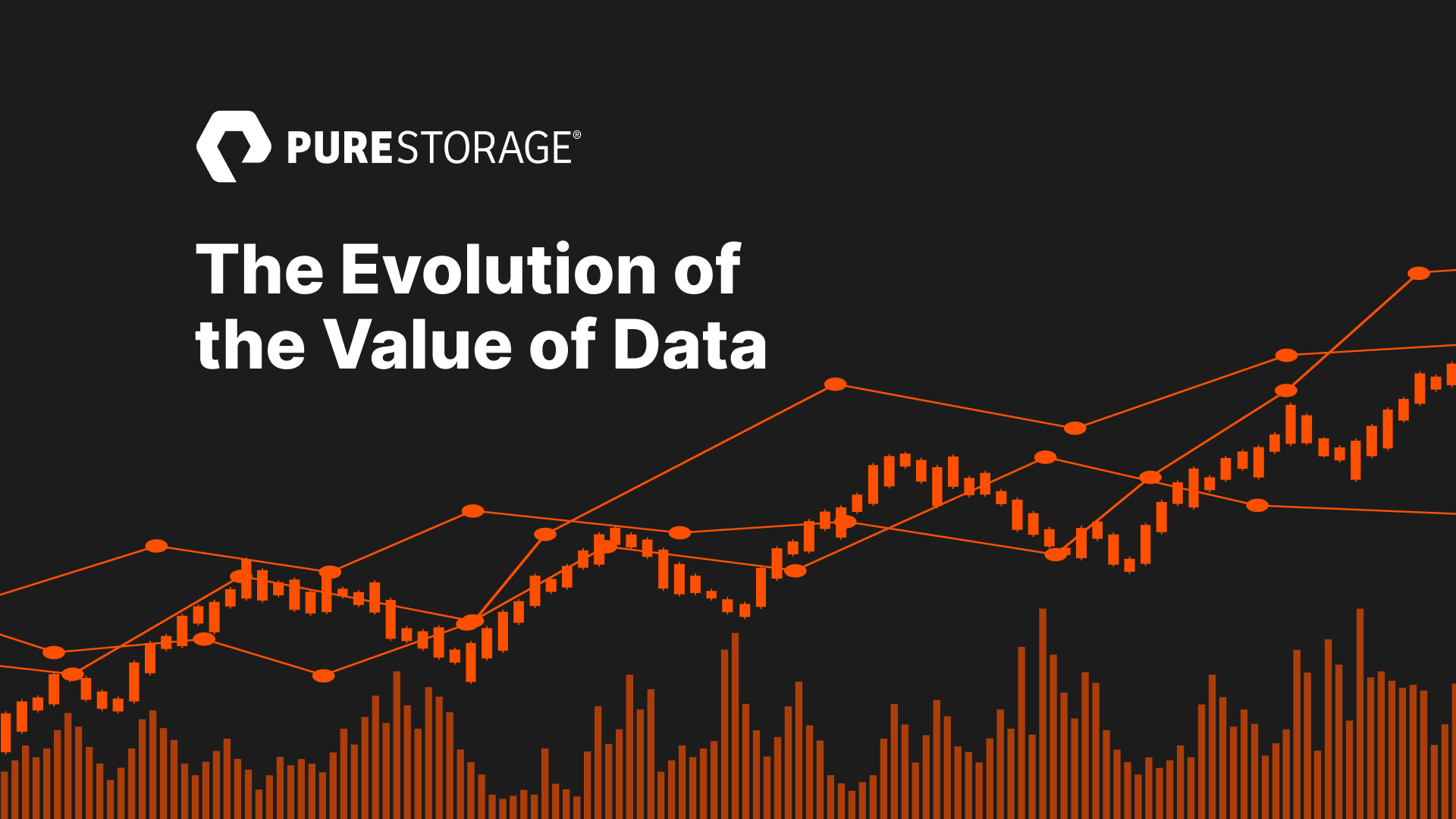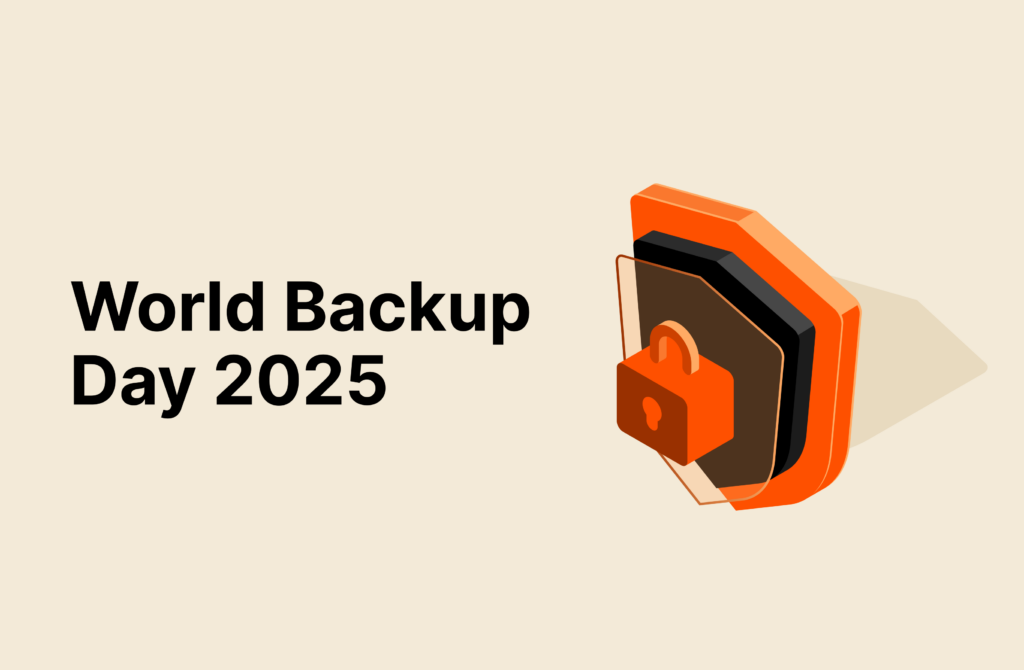Business valuations look a lot different today than they did a few decades ago, when tangible assets like capital investments, land, property, equipment, inventory, and materials took top billing on the balance sheet.
Today, intangible assets like data are driving valuations and stock prices—perhaps even more than cash. More revenue comes from digital products and services, and data is the lifeblood for those applications.¹
But the value of data isn’t just in having it. The value of data is collectively determined by how it’s stored, processed, protected, and leveraged. That means organizations need to rethink how they’re managing this most precious asset.
Because if legacy valuations weren’t designed for modern data, neither are legacy mindsets about it or outdated frameworks for housing it.
The Evolution of the Value of Data
While big data gained steam over a few decades and a couple of industrial revolutions, it took a disaster for traditional business valuations to catch up.
On 9/11, swaths of companies’ data were lost that insurance claims wouldn’t cover. It was a loss that paled in comparison to the tragedy but set in motion a massive shift all the same. The world (and equity analysts) began to recognize the value of data as a critical asset, not a business by-product. In fact, years later, Gartner would rightly predict that by 2021, analysts would give information portfolios a bigger piece of the valuation pie.
The predictions were correct. “Information-centric” companies like Microsoft and Apple and data firms like Amazon and Facebook surpassed oil and energy companies as the most valuable in the world. Some are even able to remain valuable while offering their services for free (Facebook and Snapchat, for example), all due to data.
It’s not just tech companies. Intangible assets make up over 80% of the total value of the S&P 500. And, close to 90% of a firm’s valuation is determined by intangible assets, including not just customer data and software but also brand loyalty and intellectual property (IP). Much of this IP is dependent on data, evident by the staggering amount of patents filed for algorithms in recent years. ²
It’s possible the value of data could affect stock price more than cash flow. Deloitte notes that how data is managed is critical “to increasing the value you provide to shareholders and to optimizing the future success of your organization.” ³
So, it’s not just a saying; data is the “new oil.”
How Is The Value of Modern Data Determined?
Today, data is widely recognized as a commodity to be bought and sold but also as digital gold for decision-making, next-gen applications, and everything data-driven under the sun. Digital business models are built entirely on the existence of great data—just look at Uber and Airbnb. So how is it valued?
In 2020, a Cambridge University study sought to create a framework for the value of data, categorizing aspects of data by informational and economic attributes. Other aspects include attributes that make data “good data,” such as accuracy, timeliness, and the completeness of the picture it paints. Then, there are aspects such as exclusivity and how restricted it is by compliance and privacy.
But it’s not just having the data—its ultimate value of data is determined by:
- How it’s protected. If data is organizational lifeblood, it needs to be safe and available. This is all about recovery—how fast can you get back online and be operational after an event, minimizing lost revenue?
- How it’s stored and processed. Like cash and banking, data storage isn’t meant to be a vault you can never access—it’s a living, breathing part of your infrastructure. Efficient storage and processing are key to extracting value.
- How it’s leveraged. Companies with robust data supply chains are compounding data’s value—think automation, intelligence, and future innovation. Likewise, those without the capabilities are squandering untapped potential.
- How it’s managed. Providing evidence of data agility and accessibility requires removing silos, consolidating data types, and enabling rapid agility. What used to be a headache is made easy by modern solutions with a “single pane of glass” that transforms data operations.
These are all things an organization can control, improve, and simplify with the right infrastructure, governance, talent, and technology. In fact, the right infrastructure can even compound the value of data.
Treat Your Data Like Gold with Pure Storage
IDC predicts that “by 2025, public enterprises’ valuations will be based as much on confidence in data controls for proper/effective use of data as in financial controls, focusing increased spend on data-centric solutions.”
If you’re not already, it’s time to invest in better data solutions. In addition, companies that hire chief data officers (CDOs) and create data science teams will come out ahead. But every team needs the right foundation to support it and grow with it, not hold it back.
“Boards and CEOs should not delay in hiring or appointing CDOs to begin optimizing the collection, generation, management, and monetization of information assets before a critical mass of equity analysts starts asking related questions of them.” –IDC
As we emerge from an unprecedented couple of years—and a race toward digital-first business—now is the time to first and foremost get a handle on the value of data. Then, treat it accordingly. You wouldn’t keep oil in a leaky drum or cash in an inaccessible vault, earning zero interest.
To invest in data, invest in modern data solutions from Pure.





